Analysis of the Machining Process of Inconel 718 Parts Manufactured by Laser Metal Deposition
Abstract
:1. Introduction
2. Materials and Methods
2.1. Experimental Setup for Hybrid Additive/Subtractive Manufacturing
2.2. Machining Strategy and Cutting Tools
2.3. Workpiece Quality Analysis
3. Results
3.1. Mechanical Properties and Workpiece Microstructure Characterization
3.2. Chip Morphology Analysis
3.3. Cutting Forces
3.4. Influence of the Machining Process on the Final Workpiece Microstructure
4. Conclusions
- No significant differences were observed in the mechanical properties provided by the specimens obtained at different positions of the wall manufactured by LMD. The yield strength and tensile strength values were comparable to the ones provided by the forged workpiece. However, the elongation at fracture was much lower for the LMD workpiece as compared to the forged one.
- The chip geometry was significantly different in terms of length and shape. They were shorter and straighter for the LMD wall as compared to those obtained for the forged wall (which also had a spiral shape). This difference can be related to the higher elongation at fracture of the forged material.
- The evolution of the bending moment is in accordance with the magnitude of the amount of the removed material. The higher values observed for the LMD can be related to its higher hardness value as compared to the forged material. Furthermore, the use of a bending moment polar plot has shown to be useful to determine a non-uniform loading of the milling cutter.
Author Contributions
Funding
Conflicts of Interest
References
- Nowotnik, A. Nickel-Based Superalloys. In Reference Module in Materials Science and Materials Engineering; Elsevier: Amsterdam, The Netherlands, 2016. [Google Scholar]
- Rombouts, M.; Maes, G.; Hendrix, W.; Delarbre, E.; Motmans, F. Surface finish after laser metal deposition. Phys. Procedia 2013, 41, 810–814. [Google Scholar] [CrossRef]
- Rosa, B.; Mognol, P.; Hascoët, J.Y. Laser polishing of additive laser manufacturing surfaces. J. Laser Appl. 2015, 27, S2. [Google Scholar] [CrossRef]
- Flynn, J.M.; Shokrani, A.; Newman, S.T.; Dhokia, V. Hybrid additive and subtractive machine tools–Research and industrial developments. Int. J. Mach. Tools Manuf. 2016, 101, 79–101. [Google Scholar] [CrossRef]
- Strong, D.; Kay, M.; Conner, B.; Wakefield, T.; Manogharan, G. Hybrid manufacturing–integrating traditional manufacturers with additive manufacturing (AM) supply chain. Addit. Manuf. 2018, 21, 159–173. [Google Scholar] [CrossRef]
- Stavropoulos, P.; Foteinopoulos, P.; Papacharalampopoulos, A.; Bikas, H. Addressing the challenges for the industrial application of additive manufacturing: Towards a hybrid solution. Int. J. Lightweight Mater. Manuf. 2018, 1, 157–168. [Google Scholar] [CrossRef]
- Heigel, J.C.; Phan, T.Q.; Fox, J.C.; Gnaupel-Herold, T.H. Experimental Investigation of Residual Stress and its Impact on Machining in Hybrid Additive/Subtractive Manufacturing. Procedia. Manuf. 2018, 26, 929–940. [Google Scholar] [CrossRef]
- Lane, B.M.; Moylan, S.P.; Whitenton, E.P. Post-Process Machining of Additive Manufactured Stainless Steel. In Proceedings of the 2015 ASPE Spring Topical Meeting: Achieving Precision Tolerances in Additive Manufacturing, Raleigh, NC, USA, 27–29 April 2015; pp. 27–29. [Google Scholar]
- Oyelola, O.; Crawforth, P.; M’Saoubi, R.; Clare, A.T. Machining of additively manufactured parts: Implications for surface integrity. Procedia Cirp 2016, 45, 119–122. [Google Scholar] [CrossRef]
- Moat, R.J.; Pinkerton, A.J.; Li, L.; Withers, P.J.; Preuss, M. Residual stresses in laser direct metal deposited Waspaloy. Mater. Sci. Eng. A 2011, 528, 2288–2298. [Google Scholar] [CrossRef]
- Zhang, J.Z.; Chen, J.C.; Kirby, E.D. Surface roughness optimization in an end-milling operation using the Taguchi design method. J. Mater. Process. Technol. 2007, 184, 233–239. [Google Scholar] [CrossRef]
- Devillez, A.; Schneider, F.; Dominiak, S.; Dudzinski, D.; Larrouquere, D. Cutting forces and wear in dry machining of Inconel 718 with coated carbide tools. Wear 2007, 262, 931–942. [Google Scholar] [CrossRef]
- Izamshah, R.; Yuhazri, M.Y.; Hadzley, M.; Ali, M.A.; Subramonian, S. Effects of end mill helix angle on accuracy for machining thin-rib aerospace component. Appl. Mech. Mater. 2013, 315, 773–777. [Google Scholar] [CrossRef]
- Venkatesan, K.; Devendiran, S.; Goswami, B.B.; Kumar, P.; Rishabhsingh Tejpalsinngh, S. Study of Forces, Surface Finish, and Tool Life on Machining of Inconel 718. In Advances in Manufacturing Technology; Lecture Notes in Mechanical Engineering; Hiremath, S., Shanmugam, N., Bapu, B., Eds.; Springer: Singapore, 2019. [Google Scholar]
- Thamizhmanii, S.; Rosli, S.H. A study of minimum quantity lubrication on Inconel 718 steel (39). Arch. Mater. Sci. Eng. 2009, 39, 38–44. [Google Scholar]
- Parimi, L.L.; Ravi, G.A.; Clark, D.; Attallah, M.M. Microstructural and texture development in direct laser fabricated IN718. Mater. Charact. 2014, 89, 102–111. [Google Scholar] [CrossRef]
- Segerstark, A. Laser Metal Deposition using Alloy 718 Powder: Influence of Process Parameters on Material Characteristics. Ph.D. Dissertation, University West, Trollhättan, Sweden, 2017. [Google Scholar]
- Schirra, J.J.; Viens, D.V. Metallurgical factors influencing the machinability of Inconel 718. In Superalloys 718, 625, 706 and Various Derivatives; The Minerals, Metals & Materials Society: Warrendale, PA, USA, 1994; pp. 827–838. [Google Scholar]
- Ahmed, N.; Mitrofanov, A.V.; Babitsky, V.I.; Silberschmidt, V.V. Analysis of Material Response to Ultrasonic Vibration Loading in Turning Inconel 718. Mater. Sci. Eng. A 2006, 424, 318–325. [Google Scholar] [CrossRef]
- Gonzalez, J.A.; Mireles, J.; Stafford, S.W.; Perez, M.A.; Terrazas, C.A.; Wicker, R.B. Characterization of Inconel 625 fabricated using powder-bed-based additive manufacturing technologies. J. Mater. Process. Technol. 2019, 264, 200–210. [Google Scholar] [CrossRef]
- Lu, Z.; Wang, M.; Dai, W. Machined Surface Quality Monitoring Using a Wireless Sensory Tool Holder in the Machining Process. Sensors 2019, 19, 1847. [Google Scholar] [CrossRef] [PubMed]

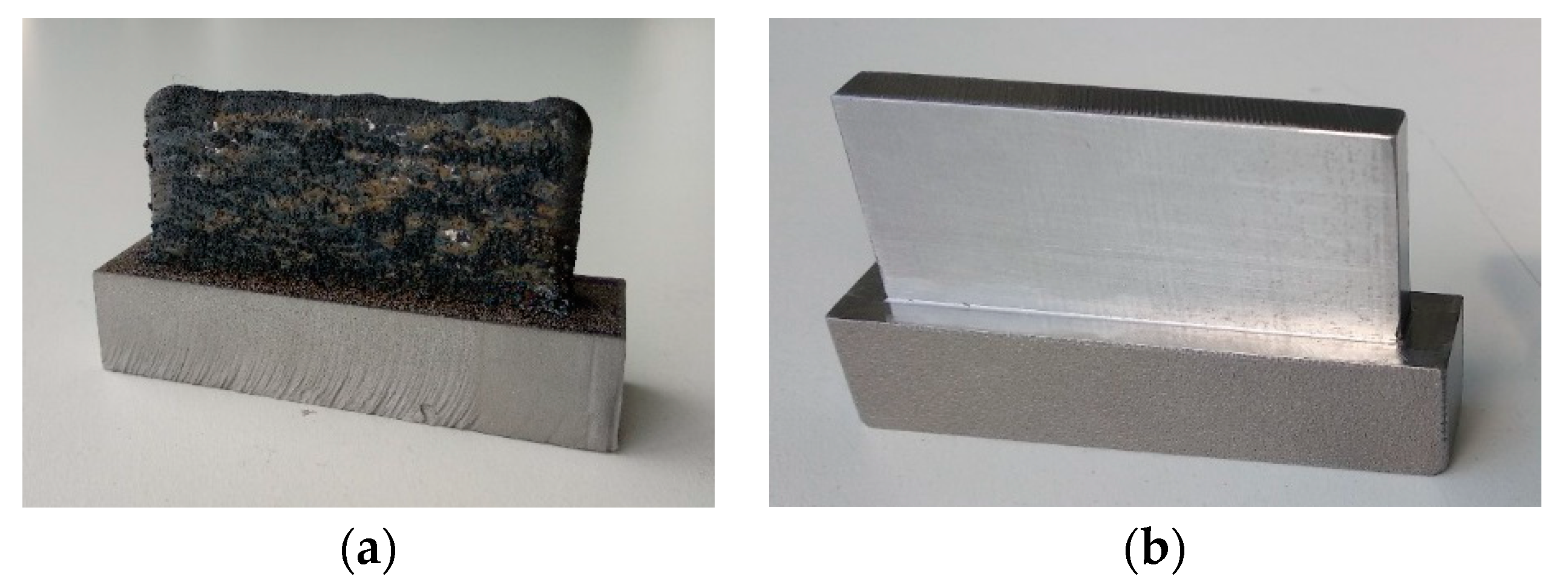

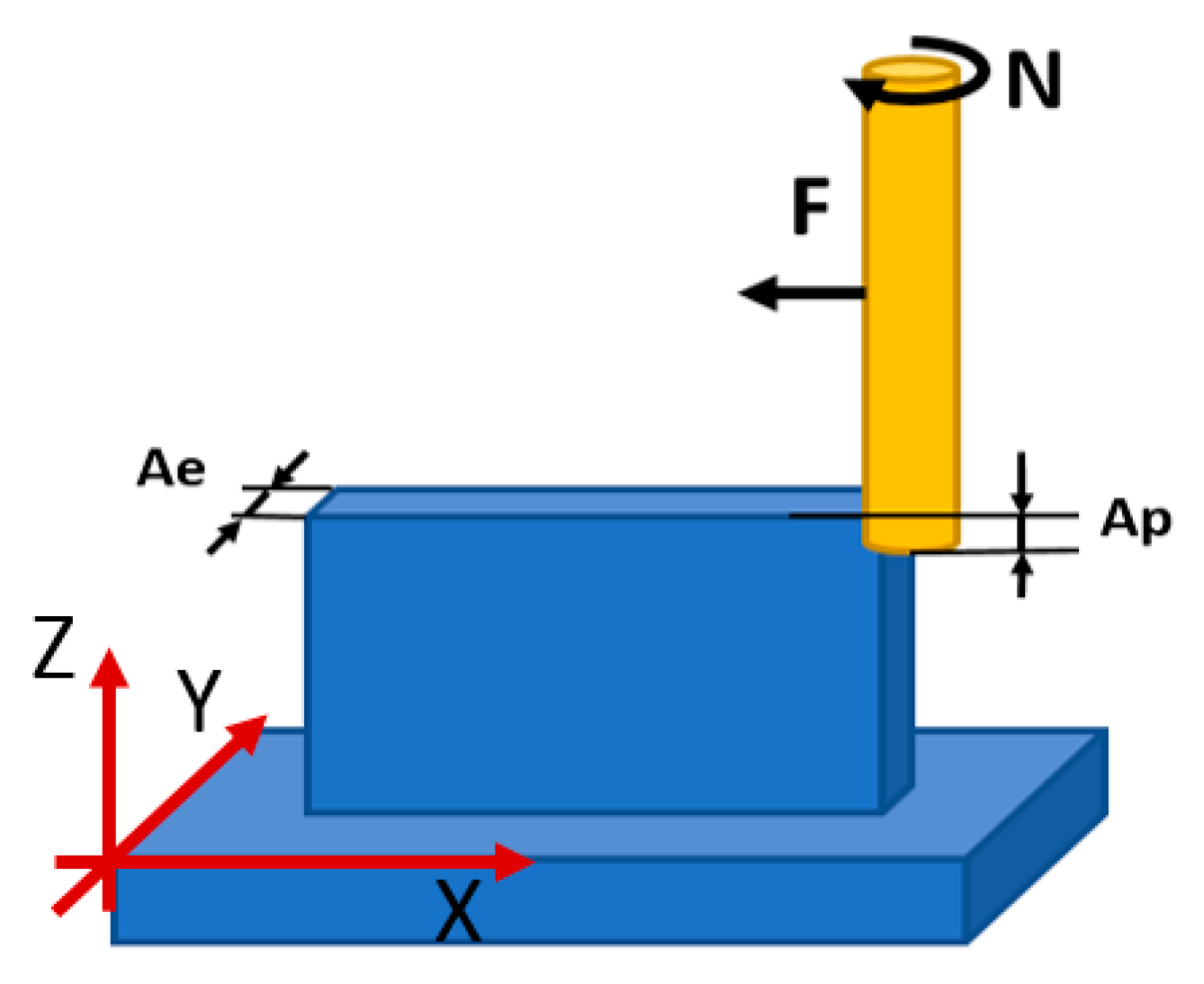
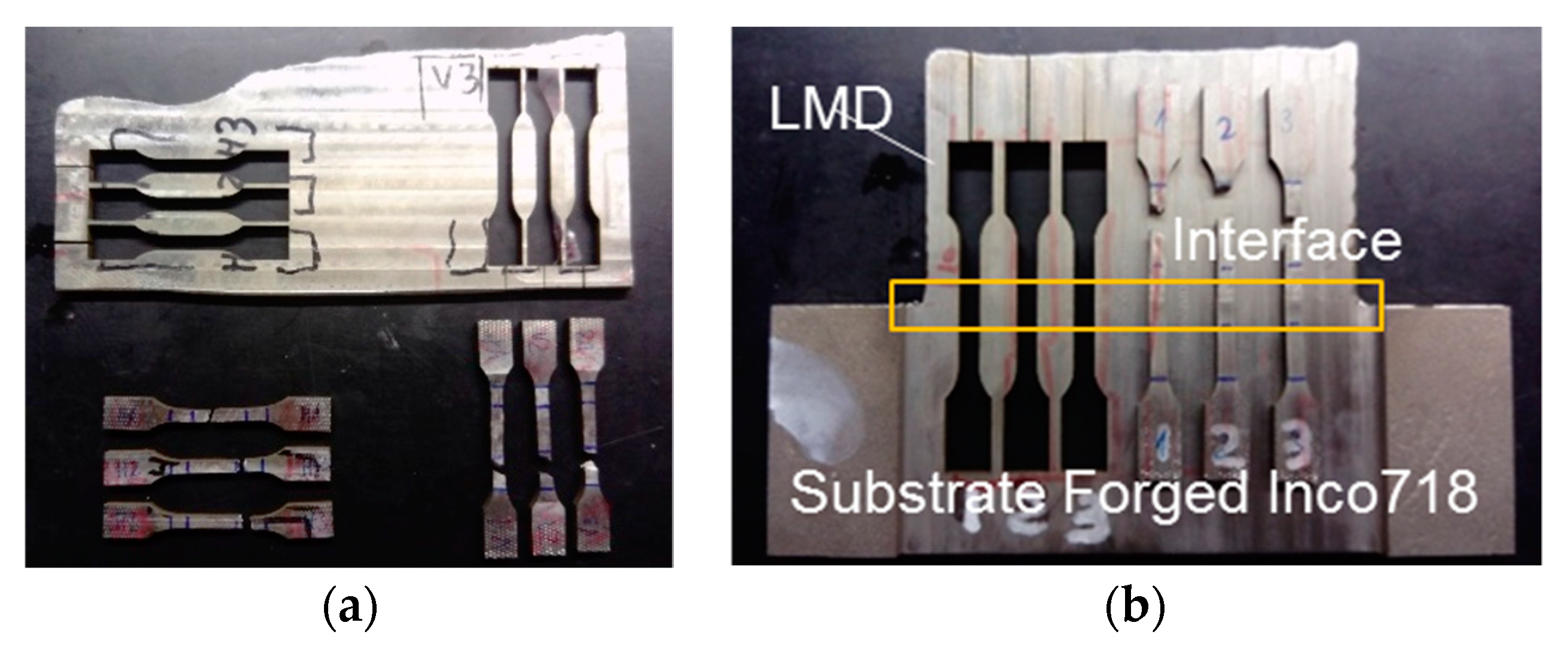
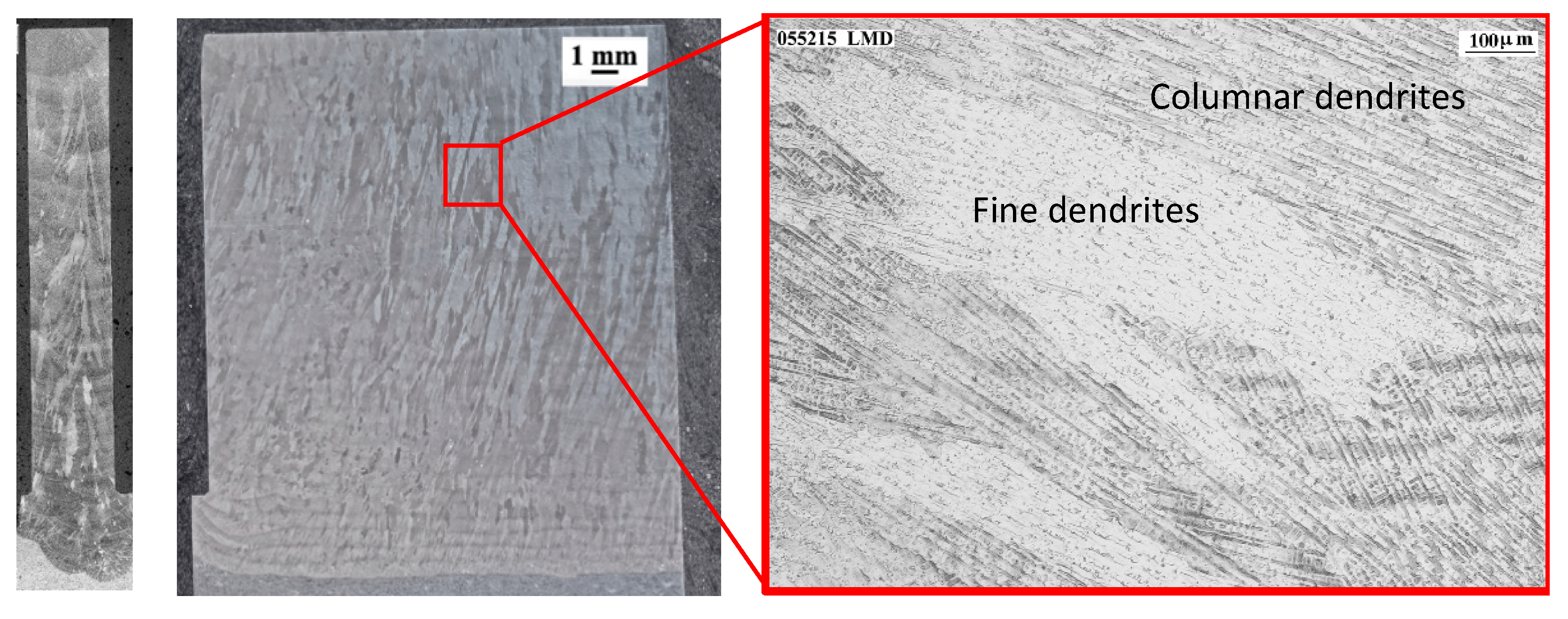
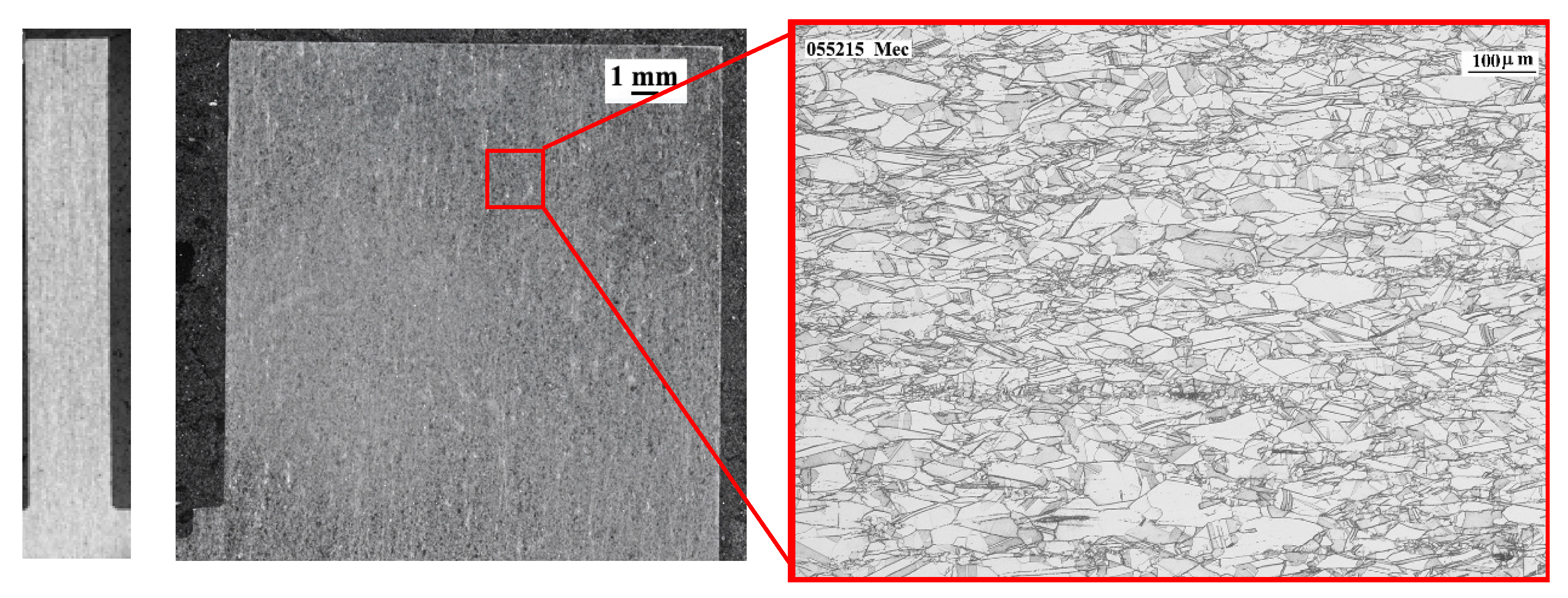

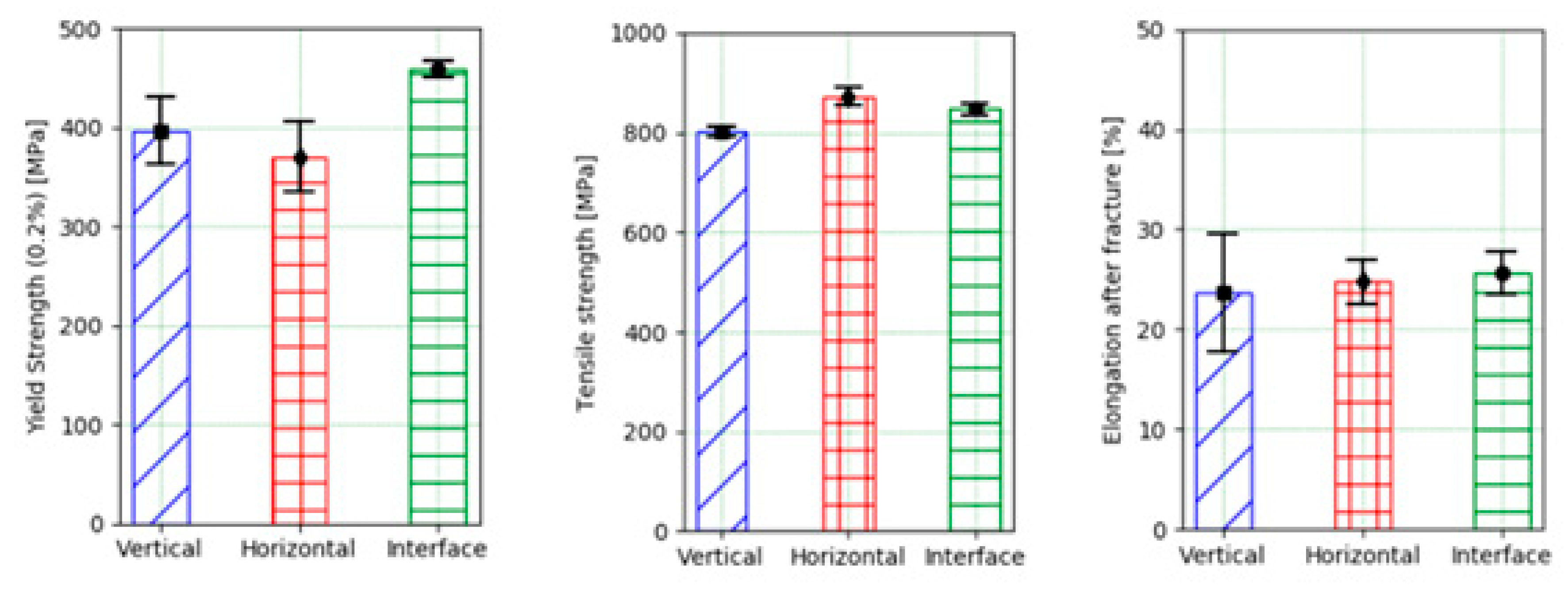


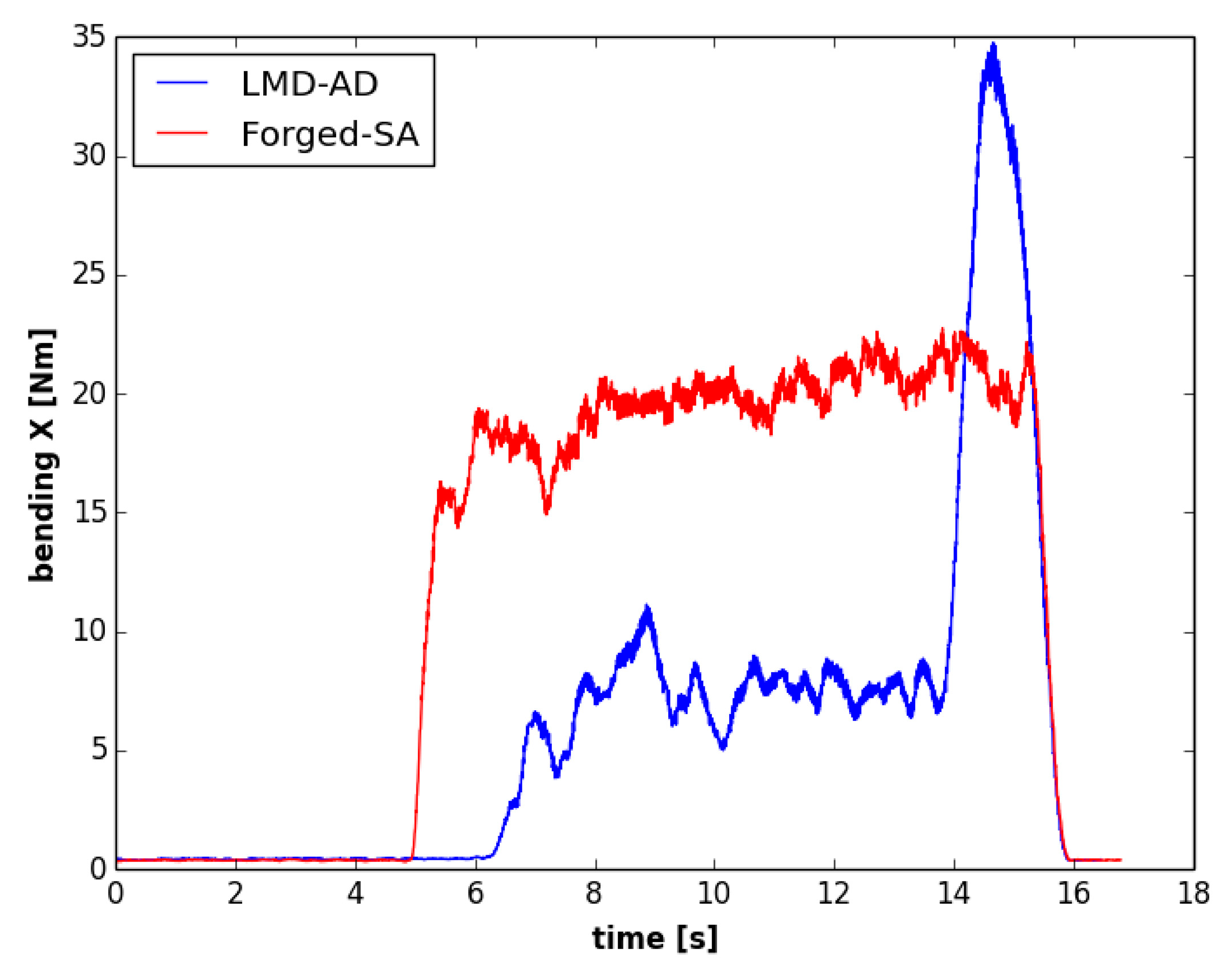
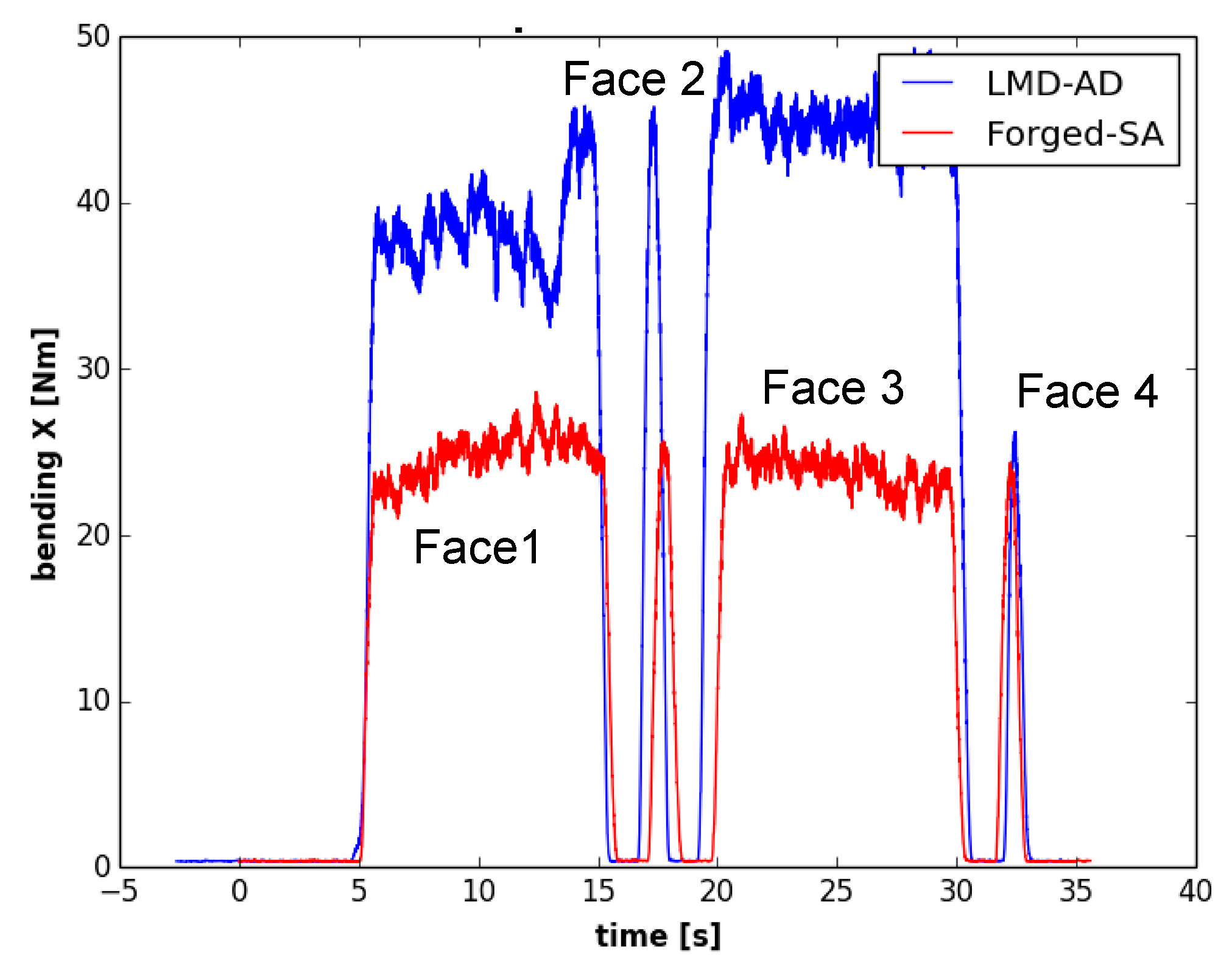
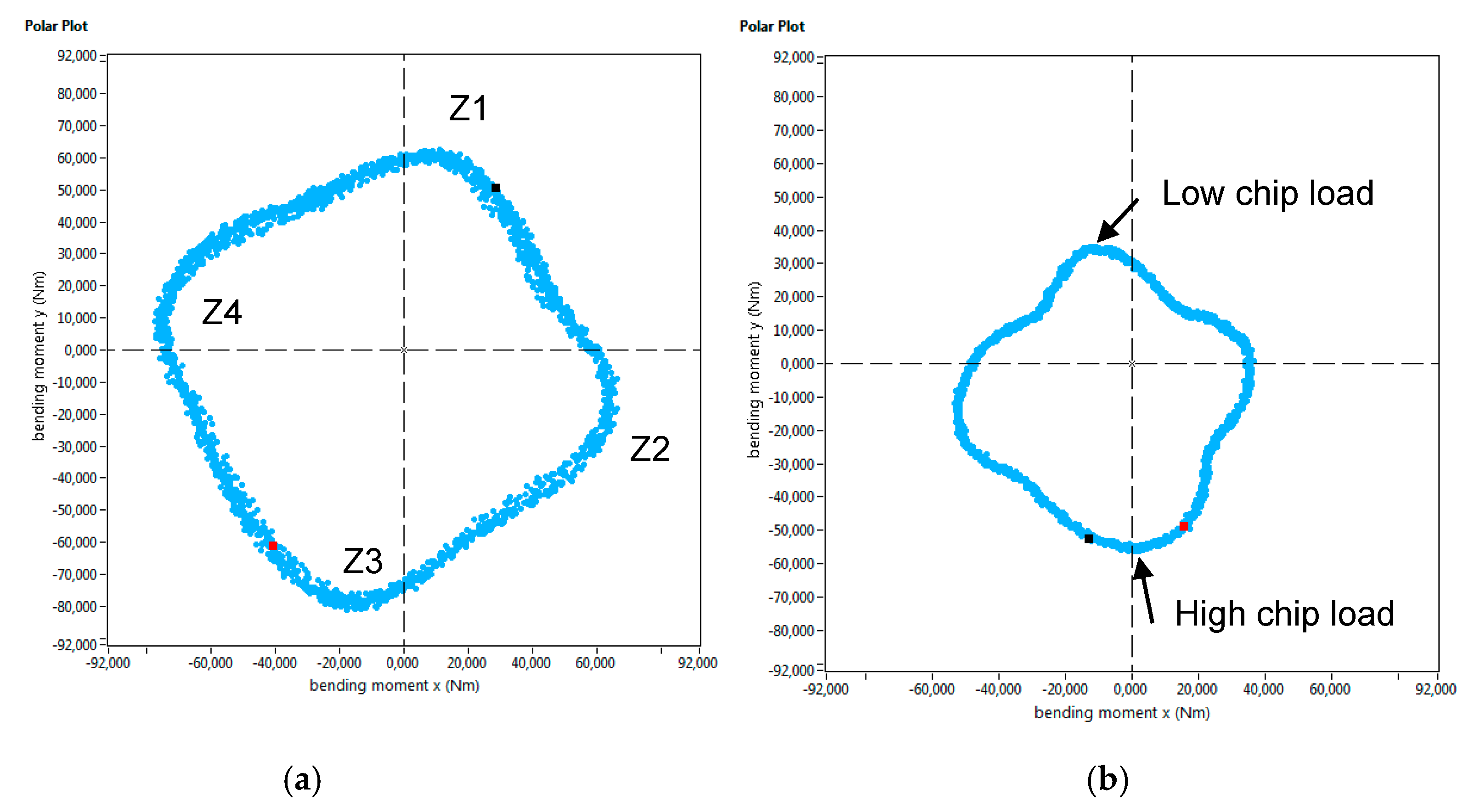
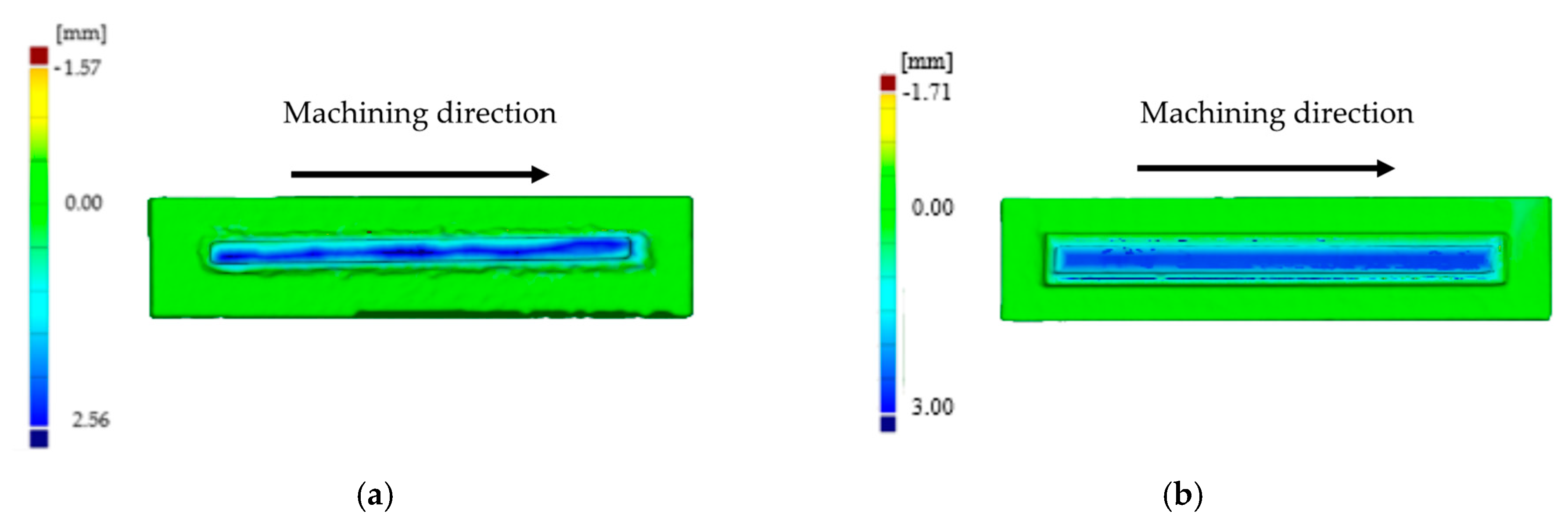
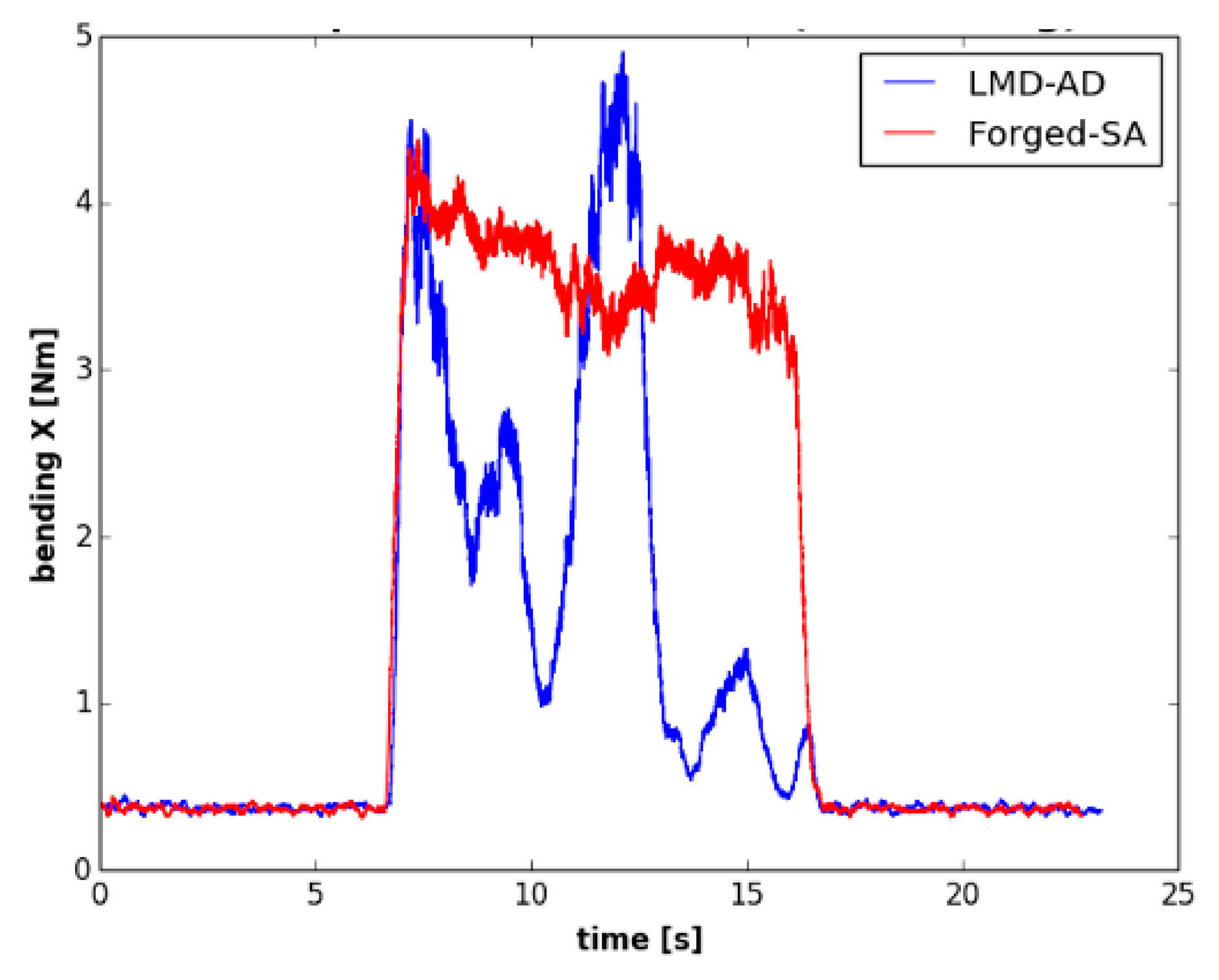

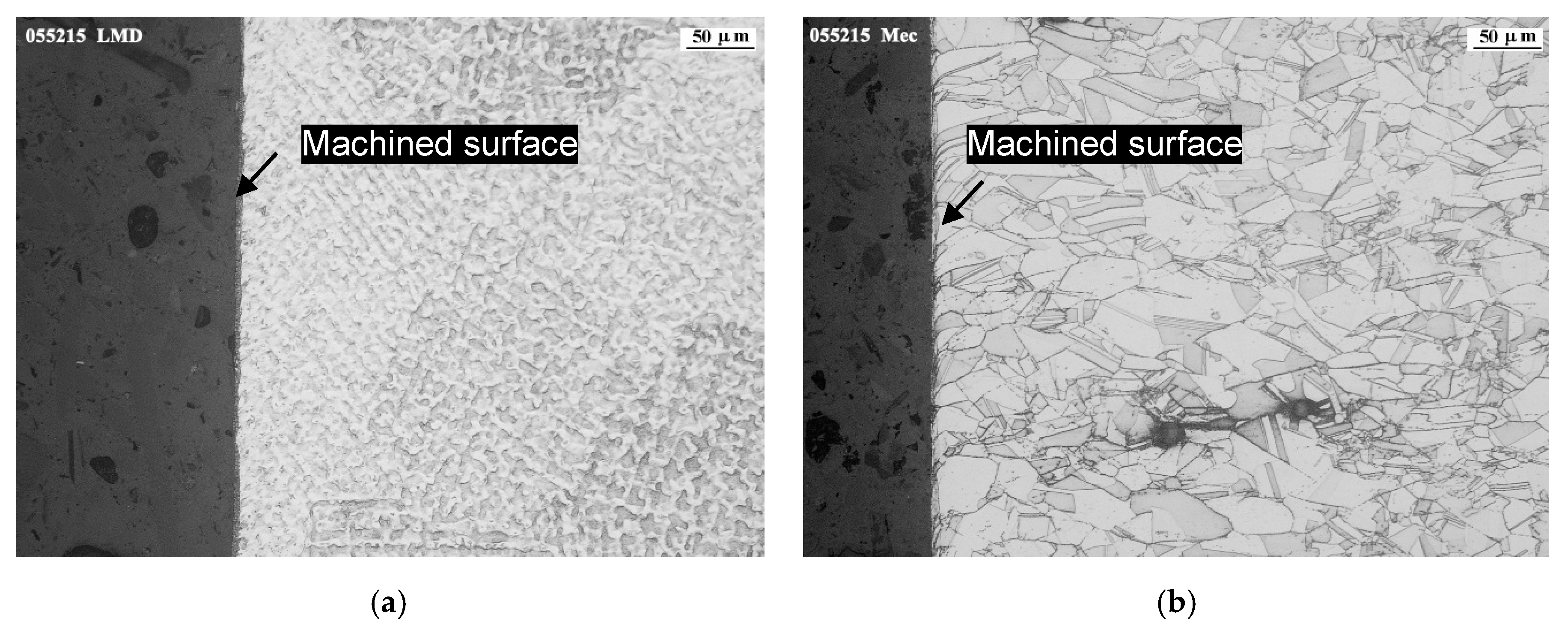
| Sol-Annealed Alloy 718 | Powder Ni-Based 718 | |
|---|---|---|
| Fe | 17.69 | Bal |
| Co | 0.22 | 0.33 |
| Cr | 18.67 | 18.99 |
| Mo | 2.88 | 3.15 |
| Nb & Ta | 5.0104 | 5.04 |
| Ti | 0.94 | 1.12 |
| Ni | 53.53 | 50.40 |
| C | 0.03 | 0.05 |
| Mn | 0.09 | 0.11 |
| S | 0.001 | 0.011 |
| Si | 0.08 | 0.10 |
| Cu | 0.12 | 0.02 |
| Al | 0.58 | 0.58 |
| B | 0.002 | <0.006 |
| P | 0.010 | 0.01 |
| Pb | <0.001 | |
| Se | <0.005 | |
| Others | <0.10 |
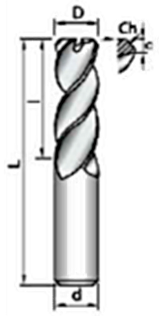 | D [mm] | 10 |
| l [mm] | 22 | |
| L [mm] | 72 | |
| Z [-] | 4 | |
| c [mm] | 0.2 | |
| Ch 45° [mm] | 0.15 |
| Powder Ni-Based 718 | LMD-AD | ||
|---|---|---|---|
| Fe | Bal (~19.98) | 17.1 | |
| Co | 0.33 | 0.23 | |
| Cr | 18.99 | 17.8 | |
| Mo | 3.15 | 3.8 | |
| Nb & Ta | 5.04 | 4.8 | |
| Ti | 1.12 | 0.62 | |
| Ni | 50.40 | 54.4 | |
| C | 0.05 | <0.02 | |
| Mn | 0.11 | 0.30 | |
| S | 0.011 | <0.01 | |
| Si | 0.10 | 0.49 | |
| Cu | 0.02 | 0.05 | |
| Al | 0.58 | 0.19 | |
| B | <0.006 | 0.005 | |
| P | 0.01 | 0.015 | |
| Pb | <0.001 | ||
| Se | <0.005 | ||
| Others | <0.10 |
© 2019 by the authors. Licensee MDPI, Basel, Switzerland. This article is an open access article distributed under the terms and conditions of the Creative Commons Attribution (CC BY) license (http://creativecommons.org/licenses/by/4.0/).
Share and Cite
Ostra, T.; Alonso, U.; Veiga, F.; Ortiz, M.; Ramiro, P.; Alberdi, A. Analysis of the Machining Process of Inconel 718 Parts Manufactured by Laser Metal Deposition. Materials 2019, 12, 2159. https://doi.org/10.3390/ma12132159
Ostra T, Alonso U, Veiga F, Ortiz M, Ramiro P, Alberdi A. Analysis of the Machining Process of Inconel 718 Parts Manufactured by Laser Metal Deposition. Materials. 2019; 12(13):2159. https://doi.org/10.3390/ma12132159
Chicago/Turabian StyleOstra, Txomin, Unai Alonso, Fernando Veiga, Mikel Ortiz, Pedro Ramiro, and Amaia Alberdi. 2019. "Analysis of the Machining Process of Inconel 718 Parts Manufactured by Laser Metal Deposition" Materials 12, no. 13: 2159. https://doi.org/10.3390/ma12132159





